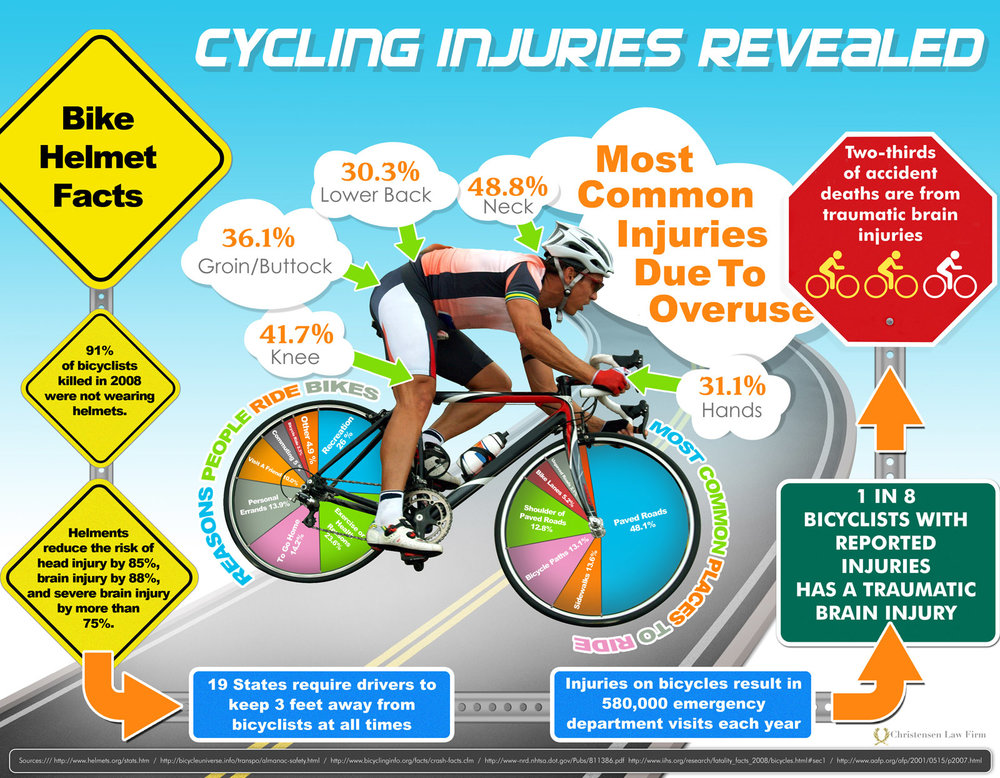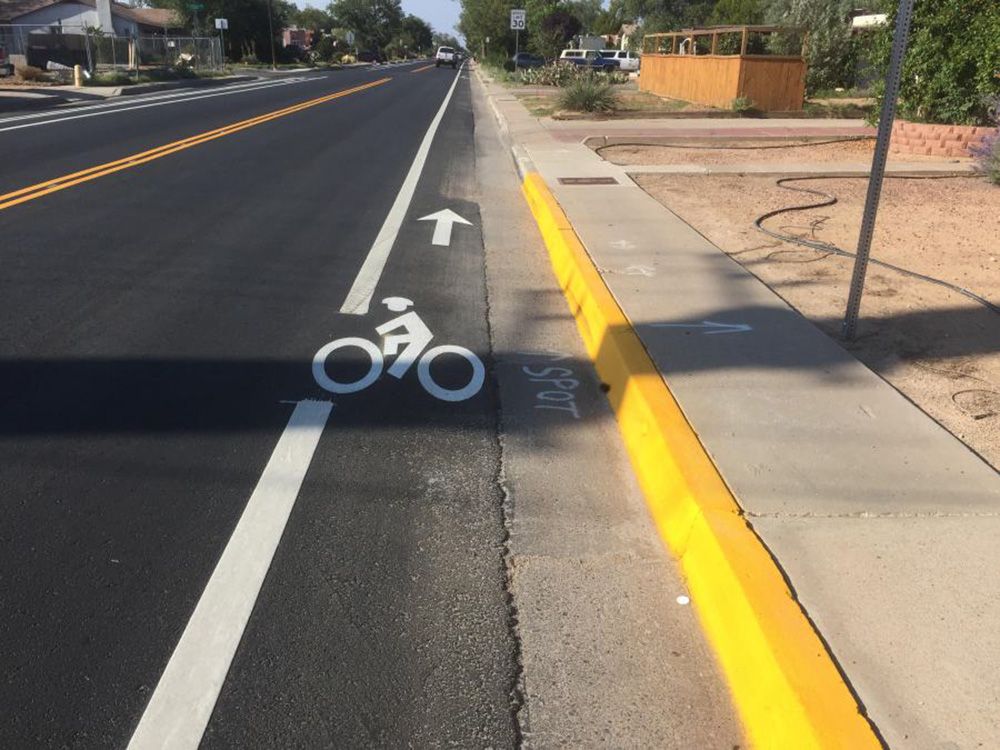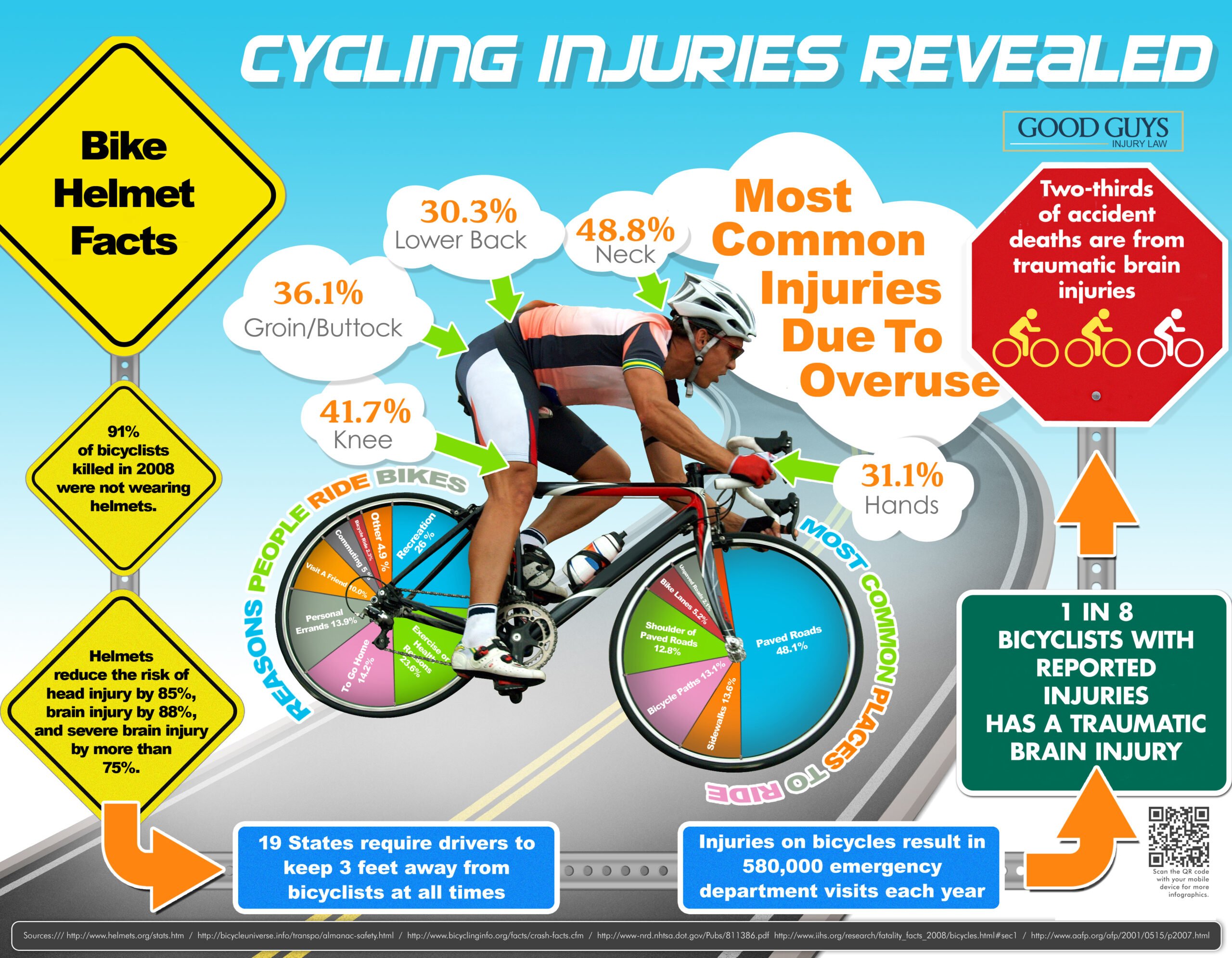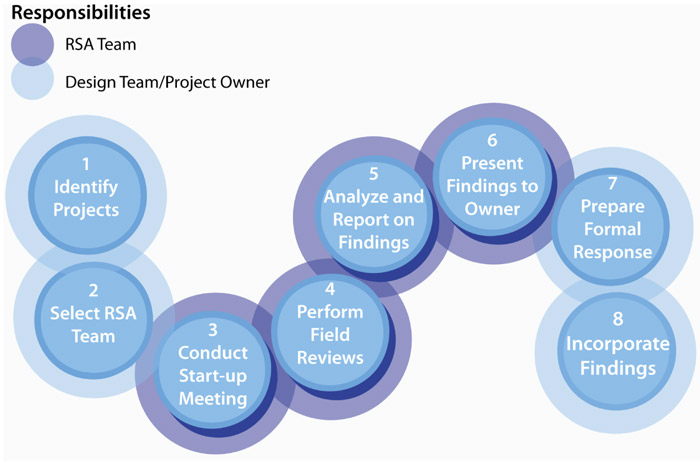In 2022, the National Highway Traffic Safety Administration reported a 5% increase in cyclist fatalities from the previous year. As an avid cyclist, I’ve experienced firsthand the dangers of sharing the road with motorists. My own near-miss with a distracted driver inspired me to dive deep into the world of bicycle accident claims. This guide will equip you with the knowledge to protect your rights and navigate the complex terrain of legal proceedings following a cycling incident.
According to the National Highway Traffic Safety Administration, 1,105 bicyclists were killed in motor-vehicle traffic crashes in 2022, a 13% increase from 976 in 2021. These statistics underscore the urgent need for cyclists to understand their rights and the legal processes surrounding bicycle accidents.
Understanding the Unique Dynamics of Bicycle Accidents
Bicycle accidents are fundamentally different from typical vehicle collisions. As cyclists, we’re more vulnerable on the road, and the injuries we sustain can be severe. The biomechanical differences between cyclist and motorist impacts play a crucial role in how these accidents unfold and the resulting injuries.
Legal distinctions in right-of-way laws for cyclists versus drivers further complicate these cases. Many jurisdictions have specific regulations governing cyclist behavior on the road, which can significantly impact liability determinations in accident claims.

Source: ResearchGate
The Cyclist’s Perspective
To build a strong claim, it’s crucial to examine the accident from our point of view as cyclists. Our experiences on the road, the split-second decisions we make, and the way we interact with traffic all play a role in how accidents unfold and how they’re perceived legally.
Visibility factors affecting cyclist-motorist interactions are often at the heart of these incidents. As cyclists, we’re acutely aware of how easily we can be overlooked by drivers, especially in low-light conditions or busy urban environments.
The impact of road positioning on accident likelihood and severity can’t be overstated. Where we choose to ride – whether in a bike lane, on the shoulder, or taking the full lane – can dramatically affect our safety and the outcome of any potential accident.
Psychological factors influencing cyclist decision-making in traffic are complex and often misunderstood by non-cyclists. The constant vigilance required to navigate busy streets while maintaining momentum can lead to split-second choices that may seem reckless to an outside observer but are often necessary survival tactics for cyclists.
Biomechanical Analysis of Cyclist Injuries
When we’re hit, our bodies react differently than if we were in a car. Understanding these biomechanical responses is key to proving the extent of our injuries and securing fair compensation.
Common injury patterns in bicycle-vehicle collisions often include head trauma, spinal injuries, and complex fractures. The force distribution analysis in cyclist impacts reveals that even low-speed collisions can result in severe injuries due to the lack of protection afforded to cyclists.
Long-term physiological effects of cycling-related trauma can be devastating. From chronic pain to neurological issues, the impact of a bicycle accident can extend far beyond the initial recovery period.

Source: Squarespace
Psychological Impact on Cyclists Post-Accident
The trauma doesn’t end when the physical wounds heal. Many of us face lasting psychological effects that can be just as debilitating as physical injuries. These mental health impacts are an important part of our claims.
The prevalence of PTSD in cyclists following accidents is a serious concern. The constant replay of the accident, heightened anxiety while riding, and even the inability to get back on a bike are common experiences that can significantly impact quality of life.
Cognitive behavioral therapy approaches for cyclist trauma recovery have shown promising results. These targeted interventions can help cyclists overcome fear and anxiety associated with riding post-accident.
Legal considerations for claiming psychological damages in bicycle accidents are complex but increasingly recognized by courts. Documenting the full extent of psychological impact is crucial for ensuring comprehensive compensation.
Urban Infrastructure and Bicycle Safety
The way our cities are built plays a huge role in our safety as cyclists. Poor urban planning can put us at risk, and understanding these infrastructure issues can strengthen our claims against municipal entities.
The impact of road design on cyclist safety statistics is clear. Cities with well-planned, separated bike lanes and traffic calming measures consistently report lower accident rates for cyclists.
Legal precedents involving municipal liability in bicycle accidents are evolving. More cities are being held accountable for failing to provide safe cycling infrastructure, opening new avenues for compensation in accident claims.
Cost-benefit analysis of implementing cyclist-friendly infrastructure overwhelmingly supports investment in better bike lanes and safety measures. Not only does it reduce accidents, but it also promotes public health and reduces traffic congestion.
In 2022, 83% of bicyclists killed in traffic crashes were in urban areas, while 17% died in rural locations. This stark statistic highlights the urgent need for improved urban cycling infrastructure and safety measures.
Bike Lane Design Flaws
Not all bike lanes are created equal. Some can actually increase our risk of accidents due to poor design. Identifying these flaws can be crucial in building a case against city planners or road designers.
Common bike lane design deficiencies and their accident correlations include inadequate separation from traffic, poor visibility at intersections, and abrupt lane endings. These issues can create dangerous situations for cyclists, often leading to accidents.
Engineering standards for safe bike lane implementation vary widely between jurisdictions. However, best practices typically include physical barriers between cyclists and motorists, clear signage, and consistent lane markings.
Case studies of successful claims against municipalities for bike lane design flaws are becoming more common. These precedents are helping to shape better infrastructure policies and providing cyclists with more legal recourse when injured due to poor design.

Source: Hearst
Traffic Signal Timing for Cyclists
Ever felt like you’re playing a game of chance at intersections? Inadequate signal timing for bicycle traffic is a real problem that can lead to serious accidents. It’s an often-overlooked factor that can significantly impact liability in a claim.
Optimal traffic signal timing models for mixed bicycle-vehicle traffic are complex but crucial for safety. Signals that don’t account for the different speeds and acceleration capabilities of cyclists can create dangerous situations.
Technology solutions for adaptive signal timing to accommodate cyclists are emerging. These smart systems can detect cyclists and adjust signal timing accordingly, potentially reducing intersection accidents.
Legal implications of outdated traffic signal systems in bicycle accident cases are significant. Municipalities that fail to update their signals to account for cyclists may be held liable for accidents resulting from inadequate timing.
Navigating the Legal Intricacies of Bicycle Accident Claims
The legal landscape for bicycle accident claims is a complex web of traffic laws, personal injury statutes, and cycling-specific regulations. Jurisdictional variations in bicycle traffic laws can significantly impact the outcome of a claim, making it crucial to understand the specific regulations in your area.
Precedent-setting cases in bicycle accident litigation have shaped the way these claims are handled. From establishing the duty of care owed to cyclists by motorists to determining the extent of damages recoverable, these cases provide valuable insights for current claims.
| State | Helmet Law | Bike Lane Use | Lane Splitting |
|---|---|---|---|
| CA | Under 18 | Mandatory | Legal |
| NY | Under 14 | Optional | Illegal |
| TX | No law | Optional | Illegal |
| FL | Under 16 | Mandatory | Illegal |
This table illustrates the significant variations in cycling laws across different states, highlighting the importance of understanding local regulations when pursuing a claim.
Comparative Negligence in Cycling Cases
Determining fault in a bicycle accident isn’t always black and white. Understanding how negligence is compared and apportioned is crucial for maximizing your compensation.
State-by-state analysis of comparative negligence laws reveals significant differences in how fault is assigned. Some states use pure comparative negligence, where you can recover damages even if you’re 99% at fault, while others use modified comparative negligence with various thresholds.
Quantitative methods for assigning fault percentages in bicycle accidents often involve detailed accident reconstruction and expert testimony. These analyses consider factors like road conditions, visibility, and the actions of all parties involved.
The impact of cyclist behavior on negligence determinations can be significant. Actions like riding against traffic, ignoring traffic signals, or not using required safety equipment can affect your ability to recover damages.
In a case where a cyclist is hit by a car while riding at night without proper lighting, the court may assign 30% fault to the cyclist for not following safety regulations and 70% fault to the driver for failing to yield. This comparative negligence would reduce the cyclist’s compensation by 30%.
Learn more about how fault is determined in accident cases by reading our guide on navigating car accident litigation.
Helmet Laws and Their Impact on Claims
Whether you were wearing a helmet can significantly affect your claim. Helmet laws vary by jurisdiction, and their impact on accident claims can be substantial.
Statistical correlation between helmet use and injury severity in accidents is well-documented. A meta-analysis estimated that bicycle helmets reduce the risk of head injury by 60% and brain injury by 58%. These figures can play a crucial role in determining damages in a claim.
Legal arguments for and against helmet use as a factor in determining damages are complex. While some jurisdictions may reduce damages for cyclists who weren’t wearing helmets, others argue that this unfairly penalizes cyclists for a personal safety choice.
Technological advancements in helmet design and their legal implications are worth considering. As helmets become more sophisticated, incorporating features like impact sensors and emergency alert systems, their role in accident claims may evolve.
Lane Splitting and Filtering Regulations
The legality of lane splitting and filtering varies widely. Understanding the rules in your area is essential, as these practices can have a major impact on liability in an accident claim.
Comparative analysis of lane splitting laws across jurisdictions reveals a patchwork of regulations. While some states explicitly allow the practice, others prohibit it or have no specific laws addressing it.
Safety statistics on lane splitting and filtering practices are mixed. Some studies suggest these practices can reduce certain types of accidents, while others highlight increased risks. These conflicting data can complicate liability determinations in accident claims.
Legal strategies for defending lane splitting in accident claims often focus on the practicality and safety benefits of the practice when done responsibly. However, the success of these arguments largely depends on local laws and the specific circumstances of the accident.
Statute of Limitations for Bicycle Accidents
Time is of the essence when filing a claim. Bicycle accidents can have unique factors that affect these time constraints, making it crucial to understand the applicable statutes of limitations.
Variations in statutes of limitations for bicycle accidents by state can be significant. While some states allow up to four years to file a claim, others may limit this period to just one year. Knowing your state’s specific timeframe is essential for preserving your right to compensation.
Legal arguments for tolling the statute of limitations in cycling cases can be complex. Factors like delayed discovery of injuries or ongoing criminal investigations related to the accident may provide grounds for extending the filing deadline.
The impact of government entity involvement on filing deadlines adds another layer of complexity. Claims against municipalities or state agencies often have shorter notice requirements and stricter filing deadlines, making prompt action even more critical.
Delayed Injury Discovery in Cyclists
Some cycling-related injuries don’t show up right away. This delayed discovery can affect your claim timeline, potentially extending the filing deadline.
Medical evidence supporting delayed onset of cycling-related injuries is growing. Conditions like post-traumatic stress disorder, chronic pain syndromes, and even some neurological issues may not manifest immediately after an accident.
Legal precedents for extending statutes of limitations due to delayed discovery vary by jurisdiction. Some courts have recognized the unique nature of certain cycling injuries and allowed claims to proceed even after the standard filing deadline has passed.
Strategies for documenting and proving delayed injury manifestation are crucial for successfully arguing for an extension of the statute of limitations. Detailed medical records, expert testimony, and a clear timeline of symptom development can all play a role in these cases.

Source: Christensen Hymas
Technological Advancements and Their Role in Bicycle Accident Claims
Technology is changing the game for bicycle accident claims. From wearable devices to smart city infrastructure, new tech is introducing fresh evidence and liability considerations.
Admissibility challenges for data from wearable devices in court are becoming more common. While this data can provide valuable insights into the accident and its aftermath, questions about accuracy and privacy often arise.
Emerging technologies in accident prevention and their legal implications are reshaping the landscape of bicycle safety and accident claims. From smart helmets that detect collisions to AI-powered traffic management systems, these innovations are creating new questions of liability and responsibility.
Wearable Technology as Evidence
Your fitness tracker or cycling computer could be a key witness in your case. Data from these devices can provide crucial information for accident reconstruction and injury assessment.
Accuracy rates of consumer-grade wearable devices for legal evidence are a hot topic in the legal community. While these devices are becoming increasingly sophisticated, questions about their reliability in high-stress situations like accidents persist.
Data privacy concerns in accessing wearable technology information add another layer of complexity to these cases. Courts must balance the potential evidentiary value of this data against individuals’ privacy rights.
Forensic analysis techniques for wearable device data in accident cases are evolving rapidly. Experts are developing new methods to extract, interpret, and present this data in ways that can withstand legal scrutiny.

Source: YouTube
GPS Data Analysis in Accident Reconstruction
GPS data can tell a detailed story of what happened before, during, and after an accident. This information can be used to establish the sequence of events and support your claim.
Advanced algorithms for interpreting GPS data in accident scenarios are becoming more sophisticated. These tools can now account for factors like terrain, weather conditions, and even the specific characteristics of different cycling disciplines.
Integration of GPS data with other forms of digital evidence, such as traffic camera footage or smartphone data, can provide a more comprehensive picture of the accident. This multi-faceted approach can be particularly powerful in complex cases.
Legal challenges to GPS data accuracy and reliability in court are not uncommon. Defense attorneys may question the precision of GPS readings or argue that external factors could have affected the data. Being prepared to address these challenges is crucial for successfully leveraging GPS evidence in your claim.
Source: YouTube
This video demonstrates how GPS data can be used to reconstruct bicycle accidents, providing valuable insights for claims.
Heart Rate and Power Output Data in Injury Claims
Your physiological data can speak volumes about the severity of your injuries and how they’ve impacted your cycling performance. This information can strengthen your claim by providing objective evidence of your condition before and after the accident.
Correlation between physiological data and injury severity metrics is an emerging field of study. Researchers are developing models that can link changes in heart rate variability or power output to specific types of injuries, providing valuable support for claims.
Long-term performance impact analysis using historical training data can be particularly powerful in demonstrating the extent of your injuries. By comparing your post-accident performance to your pre-accident baseline, we can quantify the impact on your cycling ability and overall fitness.
Expert witness strategies for presenting physiological data in court Expert witness strategies for presenting physiological data in court require a delicate balance of scientific rigor and clear communication. Experts must translate complex physiological concepts into terms that judges and juries can easily grasp, while maintaining the integrity of the data.
The Economic and Social Implications of Bicycle Accident Claims
Bicycle accident claims don’t just affect individuals; they ripple through communities and shape cycling culture. Economic impact studies of bicycle accidents on healthcare systems reveal staggering costs, both in terms of immediate medical care and long-term rehabilitation.
Sociological research on public perception of cycling safety offers insights into how these accidents influence urban planning and transportation policies. As more people become aware of the risks and benefits of cycling, we’re seeing shifts in public opinion that can drive policy changes.
Insurance Industry Adaptations to Cycling Claims
The rise in cycling-related claims is prompting significant changes in insurance policies and premiums. Actuarial models for assessing cycling risk in insurance policies are becoming more sophisticated, taking into account factors like local infrastructure, cycling frequency, and even the type of bike used.
Comparative analysis of cycling-specific vs. general liability coverage reveals interesting trends. While general policies may offer some protection, specialized cycling insurance often provides more comprehensive coverage tailored to the unique risks we face on the road.
Emerging trends in micro-insurance products for cyclists are worth watching. These innovative policies offer flexible, usage-based coverage that can be more cost-effective for occasional riders while still providing robust protection.
Specialized Cycling Insurance Products
Bicycle-specific insurance policies are revolutionizing the way claims are handled and valued. Coverage analysis of leading cycling-specific insurance policies shows a trend towards more comprehensive protection, including coverage for theft, damage during races, and even travel insurance for cycling trips.
Claims processing efficiency comparisons between specialized and general insurers often favor the cycling-specific providers. Their familiarity with the nuances of cycling accidents typically results in faster, more accurate claim resolutions.
Legal implications of subrogation in cycling-specific insurance claims can be complex. These policies may have different subrogation rights compared to general auto or homeowners insurance, potentially affecting the overall compensation available to injured cyclists.
| Insurance Type | Coverage | Avg. Premium | Claim Process |
|---|---|---|---|
| Standard Auto | Limited | $500/year | Complex |
| Cyclist-Specific | Comprehensive | $200/year | Streamlined |
| Homeowners | Partial | Varies | Moderate |
| Travel | Limited | $50/trip | Simple |
Public Health Initiatives and Bicycle Safety
Bicycle accident claims are influencing public health policies aimed at promoting safer cycling environments. Cost-benefit analysis of public health cycling initiatives consistently shows positive returns, not just in terms of reduced accident rates but also in improved overall community health.
Epidemiological studies on the impact of cycling infrastructure on accident rates provide compelling evidence for the effectiveness of dedicated bike lanes, protected intersections, and other cyclist-friendly design elements.
Policy evaluation methods for assessing the effectiveness of bicycle safety programs are becoming more sophisticated. These assessments help policymakers allocate resources more effectively and design interventions that truly make a difference in cyclist safety.
Vision Zero Policies and Their Legal Implications
Cities adopting Vision Zero strategies may face increased scrutiny in bicycle accident claims. Legal liability shifts under Vision Zero policy implementations can create new avenues for holding municipalities accountable for cyclist safety.
Quantitative analysis of Vision Zero’s impact on bicycle accident rates shows promising results in many cities. However, the effectiveness of these policies can vary widely depending on implementation and local factors.
Challenges in enforcing Vision Zero principles in court are numerous. While the policy sets ambitious goals, translating those goals into legal standards of care can be complex. Courts must grapple with questions of reasonable expectations and the limits of municipal responsibility.
A city implements a Vision Zero policy, committing to eliminating traffic fatalities. A cyclist is injured in an area known for frequent accidents, but where improvements were planned but not yet implemented. This scenario could lead to increased municipal liability in the cyclist’s claim due to the city’s explicit commitment to safety improvements.
The Role of Expert Witnesses in Bicycle Accident Claims
Expert witnesses can make or break a bicycle accident case. Their specialized knowledge provides crucial insights that can significantly influence the outcome of your claim. Qualification criteria for expert witnesses in bicycle accident cases vary, but typically include a combination of academic credentials, professional experience, and specific expertise in areas relevant to cycling accidents.
Statistical analysis of expert witness impact on case outcomes underscores their importance. Cases with well-qualified expert testimony often result in higher settlement amounts or more favorable verdicts for injured cyclists.
Bicycle Accident Reconstruction Specialists
These experts use advanced techniques to recreate the accident scenario. Physics-based models used in bicycle accident reconstruction have become increasingly sophisticated, incorporating factors like road surface conditions, weather, and even the specific geometry of the bikes involved.
Error margin analysis in accident reconstruction methodologies is crucial for establishing the credibility of expert testimony. Reconstruction specialists must be transparent about the limitations of their models and the potential sources of uncertainty in their conclusions.
Integration of multiple data sources in comprehensive accident modeling allows for a more nuanced understanding of the event. By combining physical evidence, witness statements, and digital data, reconstruction specialists can create a more complete and accurate picture of the accident.
3D Modeling and Simulation in Accident Analysis
Cutting-edge technology allows for detailed visual representations of accidents. Accuracy rates of 3D modeling software in accident reconstruction have improved dramatically in recent years, with some systems capable of sub-centimeter precision.
Admissibility challenges for 3D simulations in court proceedings often center on questions of reliability and potential jury bias. Courts must weigh the probative value of these visually compelling presentations against the risk of unfair prejudice.
Cost-benefit analysis of using advanced 3D modeling in claims typically favors its use in complex or high-value cases. While the upfront costs can be significant, the clarity and persuasive power of well-executed 3D models often justify the investment.

Source: YouTube
Biomechanical Analysis of Cyclist-Vehicle Interactions
Understanding the physics of cyclist-vehicle collisions is crucial. Force distribution models in cyclist-vehicle collisions help explain the often severe injuries cyclists sustain even in seemingly minor accidents.
Correlation between impact dynamics and specific injury patterns provides valuable insights for both medical treatment and legal claims. This analysis can help establish the causal link between the accident and the cyclist’s injuries.
Limitations and uncertainties in biomechanical analysis of cycling accidents must be acknowledged. Factors like individual physiology, pre-existing conditions, and the chaotic nature of real-world collisions can all introduce variability into biomechanical models.
Traffic Engineers and Urban Planning Experts
These professionals can provide critical testimony on road design, signage, and infrastructure issues that may have contributed to your accident. Best practices in urban design for cyclist safety are constantly evolving, informed by both academic research and real-world data from cities around the globe.
Quantitative analysis of infrastructure factors in bicycle accident rates helps identify the most effective interventions for improving cyclist safety. This data-driven approach can be particularly persuasive in cases involving municipal liability.
Legal precedents involving expert testimony on urban planning in accident cases are shaping how courts view the responsibilities of cities and transportation departments. These cases often hinge on the expert’s ability to demonstrate how specific design choices increased the risk of accidents.
Bicycle Infrastructure Safety Audits
Expert analysis of cycling infrastructure can reveal design flaws or maintenance issues that played a role in your accident. Standardized methodologies for conducting bicycle infrastructure safety audits ensure consistency and credibility in these assessments.
Comparative analysis of infrastructure standards across jurisdictions can highlight deficiencies in local practices. This benchmarking approach can be particularly effective in demonstrating negligence on the part of municipal planners or engineers.
Cost-effectiveness studies of implementing audit recommendations often show significant returns on investment in terms of reduced accidents and improved public health outcomes. These studies can be powerful tools for advocating for safer cycling infrastructure beyond individual legal cases.

Source: Federal Highway Administration
Medical Specialists in Cycling-Related Injuries
Physicians with expertise in cycling-specific injuries can provide crucial testimony on the nature and long-term impact of your injuries. Emerging research in cycling-specific injury patterns and treatments is constantly refining our understanding of how these accidents affect the human body.
Differential diagnosis techniques for complex cycling-related traumas require a deep understanding of both the biomechanics of cycling accidents and the unique physiological demands of the sport. This specialized knowledge can be critical in accurately assessing and treating injuries.
Long-term health outcome studies for common cycling injuries are shedding new light on the true costs of these accidents. From chronic pain to reduced mobility, the impacts can extend far beyond the initial recovery period.
Long-Term Prognosis for Cyclist Injuries
Understanding the future implications of your injuries is vital for accurately valuing your claim. Predictive models for long-term outcomes of cycling-related injuries are becoming more sophisticated, incorporating factors like age, fitness level, and specific injury characteristics.
Quality of life impact assessments for chronic cycling injuries help quantify the non-economic damages in your claim. These assessments consider factors like pain and suffering, loss of enjoyment of life, and the ability to participate in favorite activities.
Economic analysis of lifetime costs associated with severe cycling accidents can be staggering. From ongoing medical care to lost earning potential, the financial impact of a serious cycling injury can extend for decades.
The Intersection of Bicycle Accident Claims and Environmental Law
As cycling gains prominence as an eco-friendly transportation option, bicycle accident claims are increasingly intersecting with environmental law and policy. Carbon emission reduction metrics associated with increased cycling provide a compelling argument for promoting and protecting cyclist safety as part of broader environmental initiatives.
Legal frameworks for integrating environmental benefits into accident claims are still evolving. Some innovative legal theories are exploring ways to factor the positive environmental impact of cycling into damage calculations or liability assessments.
Green Transportation Initiatives and Liability
Cities promoting cycling as part of environmental programs may face new liability considerations in accident claims. Risk assessment models for green transportation initiatives must now account for the potential legal exposure created by encouraging more people to cycle.
Comparative analysis of liability frameworks in eco-friendly vs. traditional transport reveals interesting disparities. While promoting cycling may increase certain types of accident risks, it also contributes to overall reductions in air pollution and traffic congestion, creating a complex calculus for policymakers and courts.
Policy evaluation methods for balancing safety and environmental goals are becoming more sophisticated. These assessments aim to find the sweet spot where cycling is both safe and environmentally beneficial.
Shared Responsibility in Bike-Share Program Accidents
Determining liability in accidents involving bike-share programs introduces complex legal questions. Contractual liability distribution in bike-share program agreements often involves multiple parties, including the program operator, the city, and sometimes even the bicycle manufacturer.
Data privacy concerns in bike-share accident investigations add another layer of complexity. The detailed usage data collected by these programs can be valuable for accident reconstruction but also raises questions about user privacy and data protection.
Insurance models for multi-party liability in shared mobility accidents are still evolving. These new models must account for the unique risks and responsibilities associated with bike-share programs, often requiring innovative approaches to coverage and claims processing.

Source: ResearchGate
Climate Change Litigation and Cycling Infrastructure
The push for increased cycling infrastructure as a climate change mitigation strategy is creating new legal frameworks. Legal arguments linking cycling infrastructure to climate change mitigation are becoming more common in both policy debates and courtrooms.
Cost-benefit analysis of cycling investments in climate action plans consistently shows positive returns, not just in terms of reduced emissions but also in public health benefits and reduced traffic congestion.
Jurisdictional variations in climate-related cycling infrastructure mandates can create disparities in cyclist safety and legal protections. These differences may become increasingly relevant in accident claims, especially those involving cross-jurisdictional travel.
Carbon Footprint Reduction Claims in Accident Compensation
Innovative legal arguments are emerging, linking cycling’s environmental benefits to higher valuations in accident claims. Methodologies for quantifying individual cyclist contributions to carbon reduction are becoming more refined, potentially opening the door to including these benefits in damage calculations.
Legal precedents for including environmental factors in personal injury valuations are still rare but growing. These cases often hinge on demonstrating a clear link between the plaintiff’s cycling activity and measurable environmental benefits.
Ethical considerations in monetizing environmental benefits in accident claims are complex. While acknowledging the positive impact of cycling is important, there are concerns about creating a system where environmental contributions could be seen as offsetting negligent behavior.
International Perspectives on Bicycle Accident Claims
Bicycle accident claims vary significantly across different countries and legal systems. Comparative analysis of cycling accident rates across different legal systems reveals interesting patterns, often correlating with the robustness of cycling infrastructure and legal protections for cyclists.
The impact of cultural attitudes towards cycling on legal frameworks cannot be overstated. Countries with a strong cycling culture often have more developed legal protections and infrastructure for cyclists, which in turn influences how accident claims are handled.
European Models of Cyclist Protection Laws
Countries like the Netherlands and Denmark have pioneered cyclist-friendly legal frameworks. Statistical analysis of cycling safety outcomes in countries with presumed liability for motorists shows significantly lower accident rates and better outcomes for cyclists when accidents do occur.
Economic impact of cyclist-friendly legal frameworks on healthcare and insurance systems is generally positive. While there may be initial costs associated with implementing these frameworks, the long-term savings in healthcare costs and improved public health outcomes often outweigh these investments.
Adaptation challenges of European models in non-European legal contexts are numerous. Differences in legal traditions, urban planning practices, and cultural attitudes towards cycling can all complicate efforts to transplant successful European approaches to other parts of the world.
Presumed Liability for Motorists in Cyclist Accidents
Some European countries flip the script by presuming driver liability in car-bicycle collisions. Comparative fault distribution statistics in presumed liability vs. traditional systems show a marked difference in how responsibility is assigned in accidents.
Behavioral impact of presumed liability on driver awareness and cyclist safety is significant. Studies have shown that this legal framework encourages more cautious driving around cyclists, potentially reducing accident rates.
Legal challenges to implementing presumed liability in common law jurisdictions are substantial. This approach represents a fundamental shift in how liability is determined, requiring careful consideration of its compatibility with existing legal principles and practices.
Emerging Markets and Bicycle Accident Jurisprudence
As cycling gains traction in developing countries, new legal precedents are being set. Socioeconomic factors influencing cycling adoption and accident rates in emerging markets create unique challenges and opportunities for developing effective legal frameworks.
Comparative analysis of legal infrastructure development for cycling in various emerging economies reveals diverse approaches. Some countries are leapfrogging older models to implement cutting-edge cyclist protection laws, while others struggle to adapt existing traffic laws to accommodate growing cyclist populations.
Impact of international aid and development programs on cycling safety legislation is worth noting. These programs can play a crucial role in sharing best practices and providing resources for implementing effective cyclist protection measures.
Adaptation of Traditional Traffic Laws to Cycling Culture
Countries experiencing a cycling boom face unique challenges in updating their legal frameworks. Case studies of successful traffic law adaptations in rapidly cycling-adopting countries offer valuable lessons for other jurisdictions grappling with similar issues.
Legislative strategies for integrating cyclist rights into existing traffic codes vary widely. Some countries opt for comprehensive overhauls of their traffic laws, while others take a more piecemeal approach, addressing specific issues as they arise.
Conflict resolution mechanisms between motorists and cyclists in transitioning legal systems are crucial for maintaining social harmony and promoting safe road-sharing practices. These mechanisms can range from specialized traffic courts to alternative dispute resolution processes focused on cycling-related conflicts.
“Bicycle expert discusses common ‘chain of events’ in bicycle accidents and claims.” “Navigating Through Bicycle Claims” from Legal Talk Network
As we wrap up this comprehensive guide to bicycle accident claims, it’s clear that the field is complex and ever-evolving. From the unique dynamics of bicycle accidents to the intersection with environmental law and international perspectives, each aspect plays a crucial role in shaping the outcome of a claim.
For cyclists navigating this complex terrain, expert guidance can make all the difference. That’s where Ultra Law comes in. With their deep understanding of personal injury law and commitment to cyclist advocacy, they’re uniquely posit For cyclists navigating this complex terrain, expert guidance can make all the difference. That’s where Ultra Law comes in. Their deep understanding of personal injury law and commitment to cyclist advocacy positions them uniquely to handle the intricacies of bicycle accident claims.
Ultra Law’s approach aligns perfectly with the nuanced nature of these cases. They consider all factors – from urban infrastructure to technological evidence – ensuring no stone is left unturned in pursuing your claim. Their contingency fee model means you can seek justice without worrying about upfront costs, even in complex cases involving smart city technology or delayed injury discovery.
If you’ve been involved in a bicycle accident, don’t go it alone. Reach out to Ultra Law for a consultation. Their team of dedicated attorneys will fight tirelessly to ensure you receive the compensation you deserve, allowing you to focus on recovery and getting back on the road.
For more information on how we approach personal injury cases, including bicycle accidents, visit our page on Our Approach to Personal Injury Cases.
Key Learnings Recap
- Bicycle accident claims require a specialized approach due to their unique dynamics and the vulnerability of cyclists on the road.
- Understanding the legal intricacies, from comparative negligence to statutes of limitations, is crucial for maximizing your claim.
- Technological advancements, including wearable devices and smart city infrastructure, are reshaping how bicycle accident claims are approached and evaluated.
- Expert witnesses, from accident reconstruction specialists to medical experts, play a vital role in building a strong case.
- The intersection of bicycle accident claims with environmental law is an emerging area that may offer new avenues for compensation.
- International perspectives, particularly from cyclist-friendly European models, provide valuable insights for improving cyclist safety and legal protections globally.
- Emerging markets are developing new legal precedents that could influence future approaches to bicycle accident claims worldwide.




